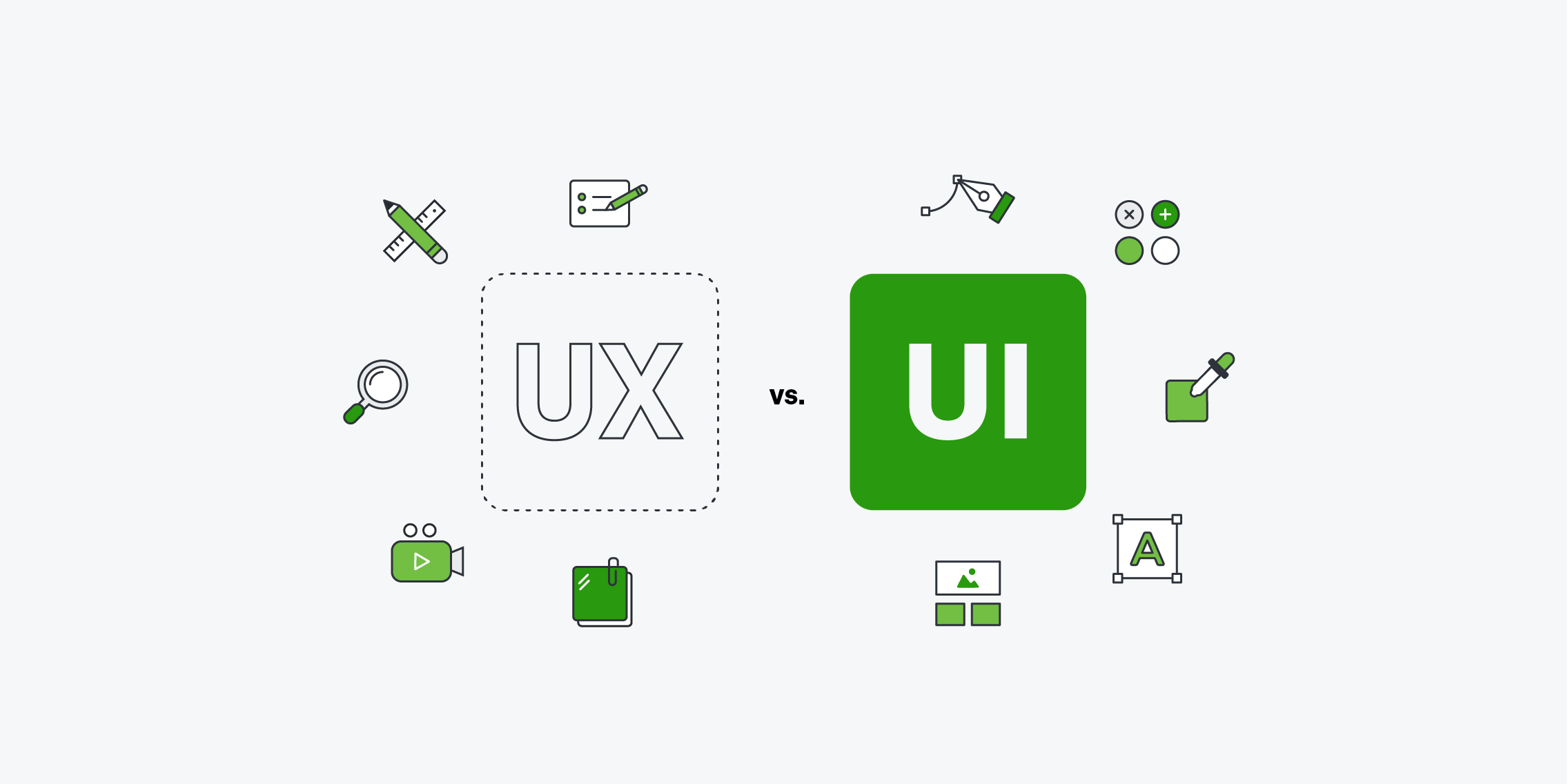In the industry of digital product development, the terms UX and UI are two different concepts used by people to depict the same concept in the continuum of designing. These two are crucial yet different: While advertising goes through some elements and is distinct in some ways, so does marketing, and they need different sets of skills.
This blog will explain the distinction between UX and UI design as well as the tasks of both design roles and how they come together to create an experience.

What is UX design?
UX design is a process that helps to understand whether the final customer of a certain product would be completely content with that product because of its smooth usability, availability, and the customer’s own level of joy in using that particular product. Thus, UX design is synergistic and engulfs all areas of the user touching a product, which is about the experience of using a product.
Key Aspects of UX Design:
- Elements of UX Design: User analysis: ensuring that the user’s behaviour and pain are identified through surveys, interviews, and tests.
- Information architecture: Organised, with the provision of information in a more or less flowing descriptive manner, but above all, user-oriented, so that the user does not have to strain and explore much in order to find what they need.
- Wireframing and Prototyping: To define the activities and features of the user, wire frames and interactive prototypes are to be designed.
- Usability Testing: Real-life user tracking where one watches users go through the product in order to note down problems that are likely to occur and the feedback that is relevant for enhancing the product.
The user experience designers respond to the overall feeling of the product, which should not only serve the user’s needs but also look pleasing to the eyes.
What is UI design?
This entails the designing of interfaces for software or computerised devices where the key consideration is the looks or style of the gadget. UI designers work towards creating beautiful and easily understandable interfaces through which users will be able to interact with the product.
Key Aspects of UI Design:
The design of the appearance of the product, the colour, typefaces, and images to be used in the product, and their combination to give a unified appearance, is also called visual design.
- Interface design: Designing the interfaces for the buttons, sliders, and forms so as to make them friendly for use.
- Layout: layout of the interface in such a way that they shall dictate the users’ sight and be congruent with the navigation.
- Stage consistency of the aesthetic: Appearance of the product to improve the usability and create orientation for the users.
Hence, the UI designers are mostly inclined towards the aesthetics and conversation of the product, where every piece of content that has a visual appeal in the UI interface needs to adhere to and embody the experience.
UI design vs. UX design.
As a result, it is possible to notice that even though UX and UI design services are often used for the same thing and connected quite closely, they have different functions throughout the whole process of creating a product.
The concept of UX design is focused on making the entire experience of a user as smooth as conceivable by increasing the importance of the process and the overall feeling of a product.
- UI Design: Ensures that the interface aesthetic is as pleasing to the eye as it is efficient, as it focuses on the visual and interaction aspects of the product.
- Process: Wireframing, prototyping, and usability testing are all part of the UX design process, although it begins with the identification of the user requirements.
- User interface design: It is done at the conceptual level, starting with the style guide and visual parts, and before proceeding to the creation of high-fidelity mockups, it ensures consistency across the product.
Outcome:
- UX design: There is an aim to deliver a product that will be easy to use, Solve issues that relate to the user, and be efficient in doing that.
- UI design: Another aspect of interaction design is user interface design (UI design), the aim of which is to create a beautiful and stimulating interface to increase consumers’ interest in the product.
Collaboration between UX and UI Design
Despite the dissimilarities, both the UI design and UX constitute a pair that must be employed in unison for the realisation of a fruitful product. This allows UX designers to supply the fundamental elements by understanding users’ needs and constructing wireframes and prototypes. These are then brought to life by the UI designers, who provide the interaction and the look. Proper work interactions and relations between the UI and UX designers ensure that one comes up with a product that is pleasing to the eye and also user-friendly.
In summary
Anyone developing a product must have basic knowledge of the simple difference between UI and UX design. While the term UI design is all about the interactive and visual aspects of the product, UX design is oriented towards the whole experience and performance. Altogether, as authors of the mentioned kinds of goods, they make things that are not only useful and efficient but also fun to deal with. Despite the existing evolution in the digital world, it will always be important for UX and UI designers to collaborate for the creation of a great user experience.
